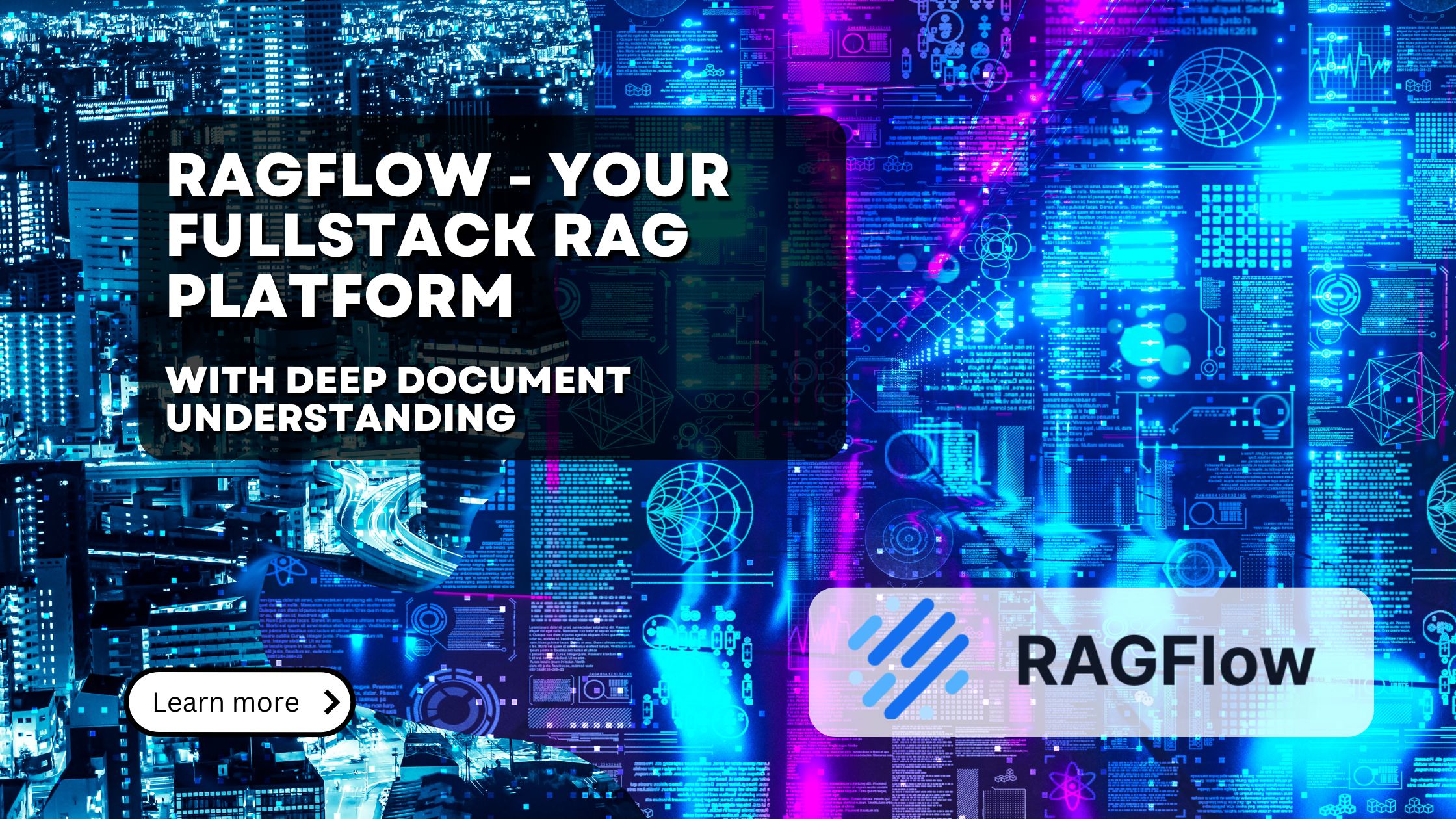- Pondhouse Data OG - We know data & AI
- Posts
- Pondhouse Data AI - Tips & Tutorials for Data & AI 29
Pondhouse Data AI - Tips & Tutorials for Data & AI 29
Claude’s Multi-Agent Insights | RAGFlow Tutorial | 11Labs Voice Agent

Hey there,
This week’s edition focuses on practical tools and thoughtful systems. We take a look at how to build real-world RAG applications with RAGFlow, explore a simple local search engine for LLM workflows, and break down how Microsoft’s Model Mu is being used inside Windows.
You’ll also get a look at Anthropic’s multi-agent architecture in Claude, ElevenLabs’ new voice assistant and if you're following the debate around reasoning models, we’ve got the latest response to Apple’s “Illusion of Thinking” paper.
Enjoy the read!
Cheers, Andreas & Sascha
In today's edition:
📚 Tutorial of the Week: RAGFlow – Build deep-document RAG with open-source tools
🛠️ Tool Spotlight: agenticSeek – Fast local search for LLMs and agents
📰 Top News: Microsoft debuts Model Mu inside the Windows Settings Agent
💡 Tips: How Anthropic built Claude’s multi-agent research engine
Let's get started!
Find this Newsletter helpful?
Please forward it to your colleagues and friends - it helps us tremendously.
Tutorial of the week
RAGFlow – Real-World RAG Made Simple

This week, we’re taking a hands-on look at RAGFlow, an open-source RAG engine designed for real-world document retrieval and citation-based QA. If you’ve ever tried to extract accurate, structured answers from PDFs, Word files, or scans—you’ll know why this matters.
In our newest tutorial, we show how RAGFlow processes complex document formats and breaks them down into well-structured chunks that can be used for retrieval with high accuracy and clear citations. It’s ideal for use cases like contract search, technical documentation, or enterprise knowledge access.
🛠️ What You'll Learn:
How RAGFlow handles PDF, DOCX, Markdown & more using a multi-stage parsing pipeline
The architecture behind RAGFlow: web UI, API server, async task processor
How to connect it to your own LLM, storage, and vector DB
Why its citation-first approach makes it great for users who care about traceability
RAGFlow is modular, open-source, and fast to get up and running. This is a great option if you're looking to build a real RAG app beyond toy examples.
Tool of the week
agenticSeek — Fast, Open-Source Search for LLM Agents
This week’s featured tool is agenticSeek, a lightweight, blazing-fast local search engine built specifically for LLM and agent workflows. If you need simple, efficient retrieval for your local documents, projects, or coding tasks—without setting up a huge stack—agenticSeek delivers.
✨ Key Features:
Fast, Local Search: Indexes and searches files in seconds on your own machine.
LLM-Ready: Designed to plug into agent or RAG pipelines for real-time search.
Simple Setup: No cloud, no complex configs—just run and go.
Open Source: MIT-licensed and easy to extend or integrate into your own stack.
agenticSeek is ideal if you want your LLMs or AI agents to quickly find info across codebases, notes, or documents without external dependencies or latency.
Top News of the week
Microsoft Unveils Mu – A Lightweight Language Model Powering the Windows Settings Agent
Microsoft has introduced Mu, a compact 330-million-parameter language model designed to operate efficiently on-device, specifically on the Neural Processing Units (NPUs) of Copilot+ PCs. Mu enables the new Windows Settings Agent to process natural language queries, allowing users to adjust system settings seamlessly through conversational input.
🔧 Key Highlights:
Optimized Performance: Mu achieves over 100 tokens per second, ensuring rapid response times for user interactions.
On-Device Efficiency: By running entirely on NPUs, Mu delivers low-latency performance without relying on cloud resources.
Tailored Training: The model was fine-tuned on a dataset of 3.6 million samples, expanding its capability to handle hundreds of system settings with high precision.
User-Centric Design: Integrated into the existing Settings search box, the agent provides a seamless and intuitive user experience.
This development underscores Microsoft's commitment to enhancing user interaction with Windows through efficient, on-device AI solutions.
Also in the news
Response to Apple’s “Illusion of Thinking” Paper
A new paper challenges the conclusions of Apple’s “Illusion of Thinking” study, arguing that current LLMs do exhibit meaningful reasoning abilities when properly prompted. The authors replicate Apple’s tasks using improved prompting strategies and find that models like Claude Opus and GPT-4 achieve strong performance—even on the complex reasoning tasks where Apple claimed they failed.
SEAL Introduces Self-Adapting Language Models
MIT researchers have proposed SEAL, a framework that enables language models to adapt themselves by generating their own fine-tuning data and learning objectives. Instead of relying on external supervision, the model improves through a self-edit and feedback loop—persistently updating its weights. It’s a step toward more autonomous, continuously evolving AI systems.
ElevenLabs Launches 11.ai – A Voice Agent That Gets Things Done
ElevenLabs has released 11.ai (alpha), a voice-first assistant that doesn’t just talk—it acts. Integrated with MCP and tools like Notion, Slack, and Perplexity, it lets users complete tasks and manage workflows using natural voice commands.
Tip of the week
Building Multi-Agent Systems with Claude – Insights from Anthropic’s Research Engine

Anthropic recently gave a behind-the-scenes look at how they built the multi-agent system behind Claude’s Research feature—a real-world implementation where multiple Claude instances collaborate to perform open-ended web research, synthesis, and reasoning. The system is available now in Claude's Research mode and represents one of the most advanced applications of agent coordination to date.
At the core, Anthropic turned to a multi-agent approach to scale exploration and parallel reasoning. A single lead agent (typically Claude Opus 4) breaks the query into subtasks and delegates them to specialized Sonnet-based subagents. Each subagent independently investigates its assigned topic using web tools, returning findings that the lead agent then synthesizes. This structure mirrors how human research teams divide and conquer information gathering—and it outperformed single-agent setups by over 90% in internal benchmarks.
Beyond the architecture itself, Anthropic’s article shares valuable lessons and practical tips on how to design these systems. They cover challenges like prompt engineering for subagent clarity, managing token usage for deeper answers, and how dynamic planning beats rigid pipelines. If you’re experimenting with agents in your own work, this is one of the most practical deep dives available right now.
We hope you liked our newsletter and you stay tuned for the next edition. If you need help with your AI tasks and implementations - let us know. We are happy to help


